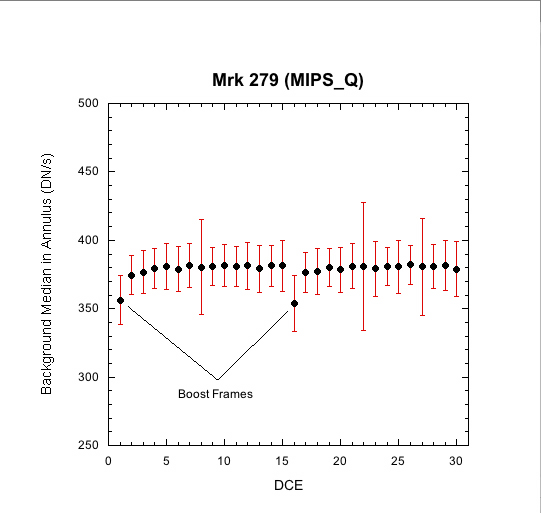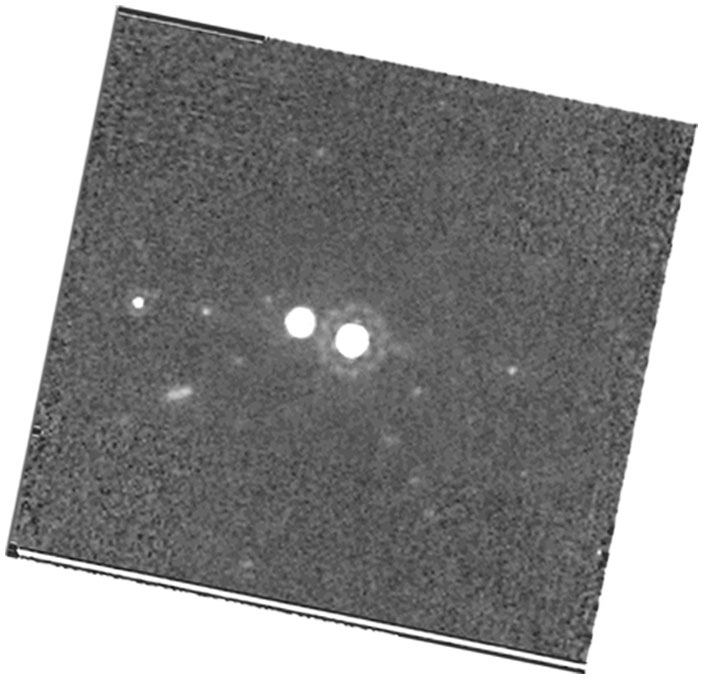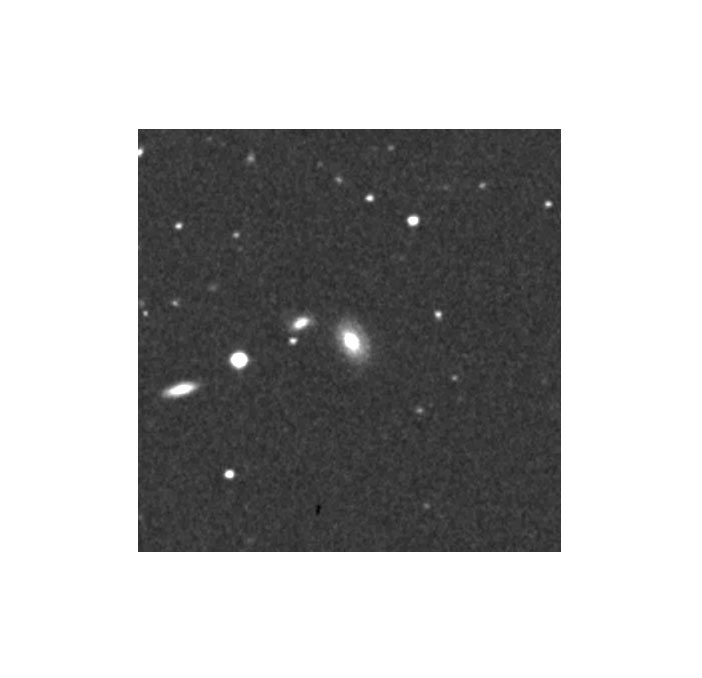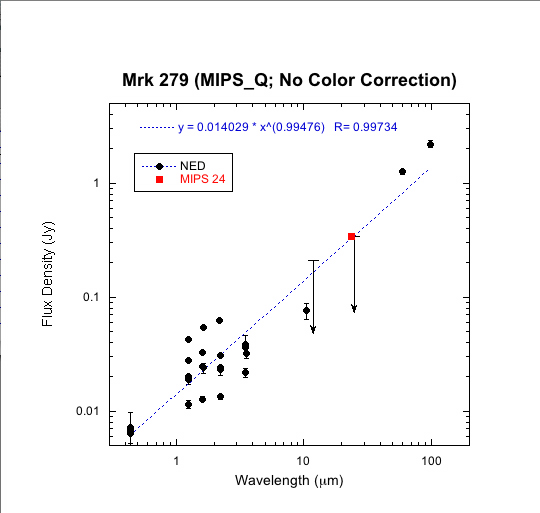
Principal:
Deputy:
Analyst:
AORKEYS:
Last Updated:
This task uses a standard photometry AOT at 24µm to observe a red, non-variable AGN with no PAH features observed previously with ISO SWS. The target will be Mrk 279, which is also being observed by IRS in their IOC task 191.
Neglecting color corrections, the 24um flux density is 0.341 Jy +/- 0.005 Jy.
The target was observed successfully, producing the expected 30 DCE's. Automated photometry was performed with IDP3. This process uses the WCS to initially place the apertures and then does a gaussian fit at each position before performing the aperture photometry. The results are listed in Table 1 and Figure 1 below.
Table 1: Aperture photometry for Mrk 279.
| XCenter | YCenter | DN/s | BMedian | BRMS |
| 38.6381 | 32.7087 | 44877 | 374.5 | 14.31 |
| 38.3524 | 84.6658 | 43875 | 376.7 | 15.52 |
| 38.613 | 37.3434 | 44627 | 379.6 | 14.65 |
| 38.3491 | 89.2209 | 43752 | 380.6 | 16.85 |
| 38.6121 | 41.9936 | 44889 | 379 | 16.62 |
| 38.333 | 93.7573 | 44601 | 381.4 | 16.05 |
| 38.4206 | 80.0368 | 43859 | 380.4 | 34.71 |
| 38.6676 | 32.6626 | 44885 | 380.9 | 14.02 |
| 38.4027 | 84.6421 | 44082 | 381.5 | 15.57 |
| 38.6262 | 37.3238 | 45042 | 380.7 | 14.77 |
| 38.3223 | 89.2368 | 43726 | 381.4 | 17.1 |
| 38.5729 | 42.0173 | 44925 | 379.1 | 17.05 |
| 38.313 | 93.7808 | 44493 | 381.3 | 15.19 |
| 38.3959 | 80.0618 | 43914 | 381.4 | 18.55 |
| 89.5631 | 32.6269 | 45524 | 376.7 | 14.58 |
| 88.6009 | 84.7343 | 44451 | 377.3 | 16.69 |
| 89.4914 | 37.2853 | 46079 | 380.2 | 13.83 |
| 88.5213 | 89.3136 | 44220 | 378.6 | 16.49 |
| 89.4289 | 41.967 | 45526 | 381.2 | 16.31 |
| 88.4428 | 93.877 | 43886 | 380.7 | 46.76 |
| 88.718 | 80.1323 | 44746 | 379.1 | 20.35 |
| 89.5878 | 32.6448 | 45713 | 381 | 13.7 |
| 88.6293 | 84.7639 | 43970 | 380.7 | 19.27 |
| 89.5176 | 37.3202 | 45635 | 382 | 14.4 |
| 88.5362 | 89.3303 | 43990 | 380.6 | 35.24 |
| 89.4353 | 41.9851 | 45331 | 380.8 | 16.32 |
| 88.4352 | 93.8888 | 43948 | 381.3 | 18.31 |
| 88.7102 | 80.1425 | 44755 | 378.8 | 20.05 |
Average Object = 44619 +/- 680 DN/s (1.5%)
Average Background = 380 +/- 1.8 DN/s (0.5%)

Figure 1: Photometric data as a function of DCE for Mrk 279. No aperture correction has been applied. The white circles indicate the boost frames. These were not used in the analysis.

Figure 4: Median background measurements in the sky annulus as a function of DCE.
The individual DCEs were aligned using the gaussian centroids, then median combined to for the final mosaic'd image shown in Figure 3 (note that the image has been rotated so that N is Up, East is to the Left). The DSS image is shown in Figure 4.

Figure 3: 24um mosaic image of Mrk 279.

Figure 4: DSS image of Mrk 279.
The derived flux density for Mrk 279 is consistent with the IRAS upper limit of 0.33 Jy at 25um. The SED obtained from NED is shown below with the 24um MIPS point. A single power-law fitted through all of the NED data is also shown for comparison.

The flux densities still need to be adjusted for the color correction. The flux densities must be transmitted to the IRS team.